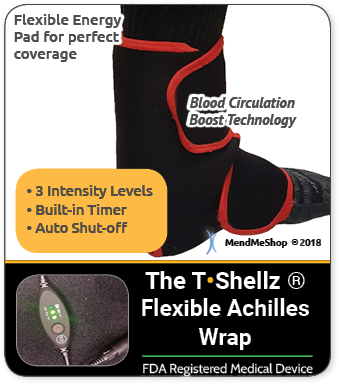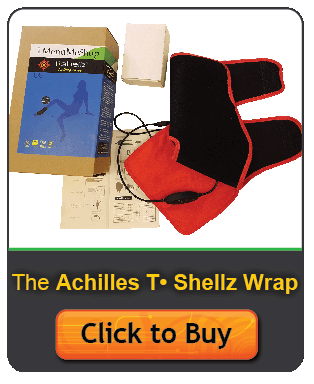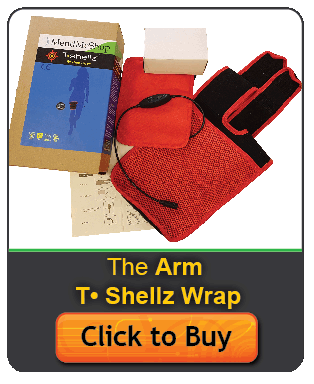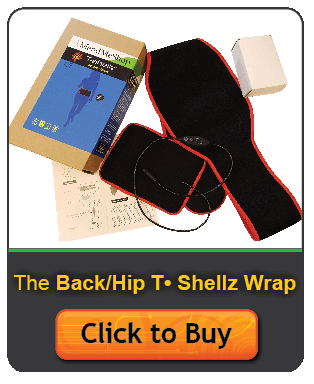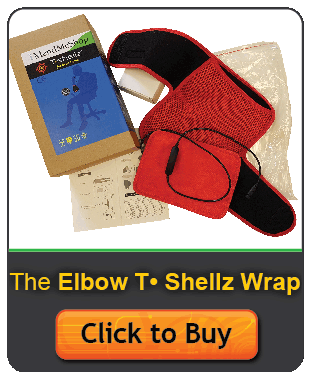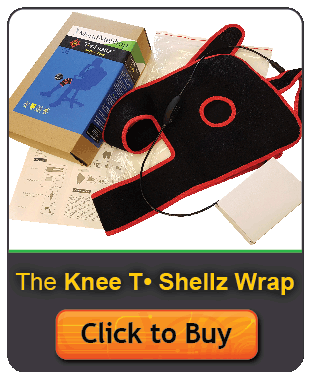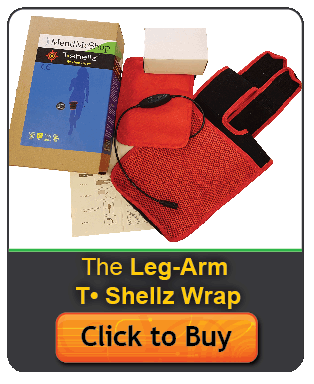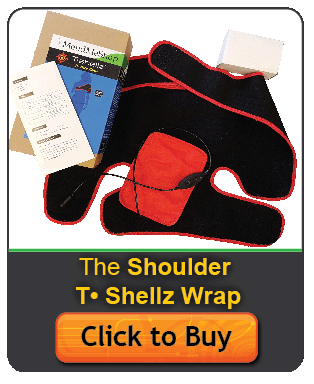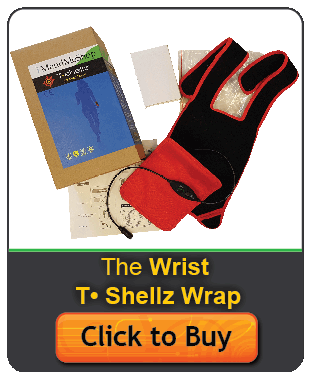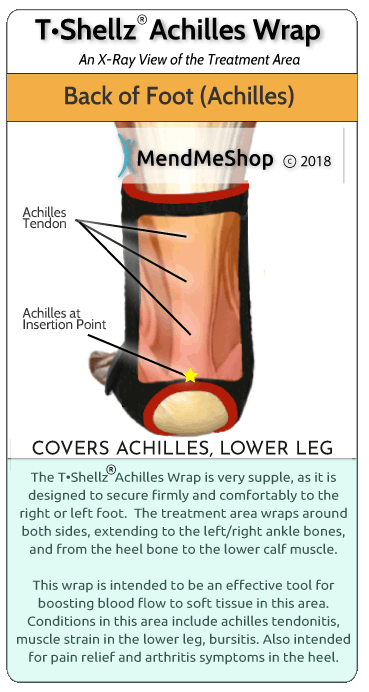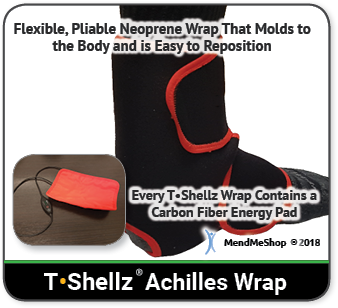An Advanced Look Into Causation, Prevention & Possible Solutions for Soft Tissue Injuries of the AchillesConservative Treatment Options for Achilles Tendon Tears, Ruptures, and Soft Tissue Injuries of the Lower Leg A Very High Percentage of our Clients Have:
...they simply decided to try our home treatment recommendations and committed themselves to a daily treatment protocol. Before you decide on an achilles treatment path, an understanding of the three major stages of the healing process is critical. With the right knowledge and the right treatment options, you can accelerate your recovery without the fear of re-injury or setbacks (which unfortunately, happens to many people - we will explain why further down the page). Step 1: Reduce The Initial InflammationInflammation is the body's natural response to a soft tissue injury and is a normal part of the healing process - helping to reduce tissue infection in the early stages of injury. Swelling, pain, heat sensation, redness, and loss of function are the main symptoms experienced and it is your bodys way of telling you there is something wrong. For certain soft tissue injuries, there may be no other option than surgery. As an example, if you have a full tear (often termed as "avulsion") of an achilles tendon or muscle - attachment surgery will be required to sew them back together; in some cases, graft surgery (moving soft tissue from one site to another) is utilized when reattachment success is improbable. The overwhelming majority of soft tissue injuries, however, are not surgically necessary and in such cases your physician will almost certainly recommend conservative treatments options. The combination of rest, elevation, topical pain relief cream and the use of a Cold Compress or Ice Pack (when there is swelling) is the gold standard in medicine for minimizing tissue damage and reducing inflammation after injury or activity. It serves as a critical bridge into the next phase of the healing process. There are certain cases where inflammation is very minor or even non-existent. This behavior is often found in tendonosis and osteoarthritis injuries. If there is no swelling, then there is little need for cold - and as such, treatment should proceed directly to step 2. Step 2: Enhance Blood Flow to the Injured Soft TissueTendons,ligaments, cartilage, and some muscle fibres are considered dense tissues. As a result, they naturally receive limited blood flow and this is precisely why injuries to these tissues take so long to heal. The challenge is, how do you effectively increase blood flow to these tissues?
When you have a tendon injury, there is not much blood flow in your injured tendon, especially if it is in the watershed zone, which it probably is. Inflammation and reduced movement (lack of activity or on-going immobility) reduces the flow of blood to an area that is already receiving very little blood flow. If you are moving your injured Achilles around you run a risk of increasing the severity of the injury. If there has been some healing, you could re-injure your tendon all over again. It is through the blood the body carries the nutrients and oxygen that injured tissues rely on for recovery.. It is well known that increased blood flow helps your body accelerate the healing process. This is why the TShellz Wrap®is such an important tool. The whole purpose of the wrap is to provide localized heat while also significantly increasing blood flow to tissue in the treatment area. The result of this is as follows:
Step 3: Recognize That Healing is a Process With dedication, the right tools, and the right information - you will achieve your goal of a sustainable recovery. A combination approach of cold, TShellz Wrap® treatments, and functional movements will make it happen much more quickly. In our experience, soft tissue repair rates via conservative home treatment methods using a dedicated, comprehensive approach have surprised many of our clients, but will differ from person to person. In nearly all cases, however, it is very important to stop whatever you were doing that created the injury in the first place (ie. running, jumping, climbing stairs). If you have questions, we welcome you to call our office toll-free at 1-866-237-9608 (Continental US), or Internationally at +1-705-532-1671. What Is Achilles Tendonitis?... Is It The Same As Calcaneal Tendinitis?Achilles Tendonitis (tendinitis) is also known as calcaneal tendonitis. Tendinopathy is becoming a common term for general tendon damage and you might be told this by your physician. The term tendinopathy can encompass more specific tendon injuries such as tendonosis, tenosynovitis, partial tendon tears, acute tendonitis and chronic tendonitis. 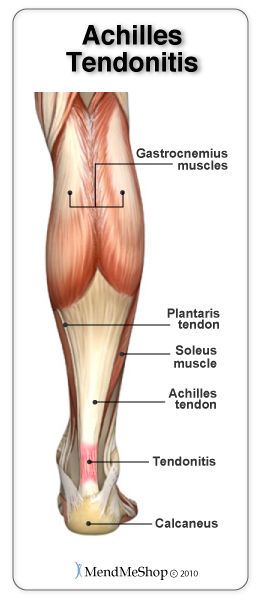 The Achilles tendon, also known as "the heel cord", is the largest tendon in the human body - this is because it must handle major stresses taken on when running, climbing stairs and playing sports. Basically this tendon needs to be large to allow for all of these activities and when it gets injured, it will definitely impact pretty much any activity you might take for granted (ie. walking, bending over, climbing stairs, driving, loading a dishwasher). The most common Achilles injury is tendonosis, which means the Achilles becomes injured due to overuse. In cases where the Achilles tendon is injured due to excessive strain (even a traumatic accident or sudden pop), this usually results in acute tendonitis or a partial achilles tendon tear. This can happen with runners that have increased the intensity and/or duration of their running. It is also common among weekend warriors aged 35 to 50 that play sports such as basketball or tennis. Excessive stress placed on the Achilles tendon during infrequent sporting periods can lead to an acute type of tendon injury. If you have Achilles tendonitis, you will be suffering from irritation and inflammation in the back of foot - just above the heel. When you have Achilles Tendinitis, you are basically suffering from a result of degenerative tears within the tendon itself. These microscopic tears are much akin to a rope that is starting to fray from excessive load - basically your tendon is telling you that it is not strong enough to handle the loads that you have been putting on it. In most cases of Achilles tendonitis, the main injury site is typically located 2-4 cm above the heel. This is known as the watershed zone of the Achilles tendon -- simply meaning that it is the part of the Achilles tendon that receives the least amount of blood supply. The less blood supply, the more prone to injury the area is. Tendon Watershed Zone = Least Amount of Blood Supply = Area of Tendon Most Prone to Injury In most cases, mild to moderate injury of the Achilles tendon (ie. tendonitis, tendonosis, tenosynovitis) can be treated through conservative treatments outlined by a physician; however in cases where the tendon has snapped or ruptured, surgical repair will probably be required. What is Achilles Tendonosis?Tendonosis is a non-inflammatory degeneration of the collagen fibers of a tendon. When you are diagnosed with tendonosis, one or more of the extensor tendons in your forearm have become chronically damaged. This means that the speed of tissue damage has exceeded the healing process over a significant period of time. Eventually the accumulation of damage to the tendon is not able to heal properly. The tendon fibers break down to a point where the once straight, strong, flexible bundle of collagen fibers become weakened by abnormally formed fibers that look more like a mess of strands. Tendonosis tissue breakdown is often caused by repetitive stress on the tendon fibers. Overuse and not enough time to rest does not allow the tendon's fibers the time required to heal properly. Tendinosis can also occur following an acute injury to the tendon, however, it does not appear until long after the injury occurs. If an acute injury is not given enough rest to heal, re-injury may continue to occur faster than the tendon can heal. This will eventually lead to degeneration of the collagen fibres as well. Since there is no inflammation with tendinosis you may not experience swelling, heat or redness. However, the tendon will probably be quite thick and you will experience pain, tenderness and stiffness within the calcaneal tendon where tissue degeneration has occurred. When severe enough, the pain will radiate into foot and up into the calf. Tendon damage and/or tendonosis damage are quite common in the achilles heel as this tendon is subjected to very high levels of tension on a very frequent basis. This flexor tendon attaches the heel bone to the gastrocnemius and solaris muscles that run up the back of the lower leg and is used in almost every task imaginable (ie. driving, walking, jumping, standing, putting on your socks, golfing, etc.) that you might do with your feet or legs and partly for such reasons, healing can take a long time.... especially without adequate rest and proper treatment. Continuous re-injury and build-up of scar tissue while staying active means you will have a greater chance of winding up with on-going lower leg and heel pain, more tearing in your tendon, tendonosis (thickening of your tendon) or even a full rupture. If you have pain and inflammation in your calcaneous tendon(s), it is very important to heal your injury completely. You must avoid the buildup of scar tissue (and the corresponding mobility limitations that inevitably follow). If you don't, your Achilles injury may plague you for what might seem forever. This is why it is so important to continuously use conservative treatment tools to heal recurring soft tissue damage before it can build into something much bigger. For Tendon Injury sufferers, having the right tools means all the difference. Achilles tendonosis is a painful, long term injury that can persist and re-injure itself for years unless treatment is properly addressed. Ask anyone that has had a serious achilles tendon injury - you will hear astonishing stories of incredible pain and a healing time that is often years, not months! Every time you move your ankle, the achilles tendon moves too - when you have an achilles injury, moving hurts! Once the Achilles tendon is injured, continuing movement and exercise means that 100% recovery is nearly impossible without proper treatment. Eventually, if left untreated, a complete rupture of the tendon may result and treatment becomes even more problematic at this point. For Tendon Injury sufferers, having the right tools combined with the will to work on your injury at home on a daily basis will mean all the difference. If you suspect you may have an Achilles tendon injury:
Achilles Movement and the Re-Injury CycleEvery time you flex your ankle, those ligaments and muscle tissue move; when they are inflamed, every movement hurts. Once this tissue is injured it's painful and becomes very difficult to recover 100% without proper treatment. Re-Injury of the Achilles Tendon Must Be Avoided At All CostsConstant re-injury needs to be avoided at all costs! Please excuse the obvious statement, but I really need to drive this point home. ReInjury is very common... why? Everyone wants to get back to their regular lifestyle once the pain has reduced. Here is where you have to be careful - often, much of the pain is due to inflammation - so, once you iced the area and the swelling dropped, a lot of the pain probably disappeared too. So then you start back at your regular lifestyle and then all of a sudden the old injury starts flaring up again - this is re-injury! Just Because The Pain Has Dropped, It Does Not Mean The Underlying Injury Has HealedRe-Injury is bad because sure, it delays the healing process, but what's worse is that every re-injury and additional healing cycle increases the amount of scar tissue that builds up in the area of your original achilles injury. This applies to muscle, tendons, ligaments and other connective tissue as well.  Scar tissue is a weak form of collagen - hard, inflexible, and tough to get rid of once it begins to take hold. The more scar tissue that develops, the more you lose the range of motion in your ankle. With excess scar tissue build up, the injured tissues and the achilles in general will remain weak and very prone to re-straining and re-tearing. While you can go a number of days and even a few weeks without any major setbacks during the injury.. inevitably, a certain movement or motion will happen that causes your injured soft tissue to strain and even tear once again. This is attributed to the scar tissue build up and will result in the buildup of yet more scar tissue and a further reduced range of motion (ROM). The more scar tissue that develops, the greater the risk of winding up permanently injured with chronic pain or arthritis. Scar tissue means that your achilles will not perform as well as it once did and it makes it much more prone to injury later on. The longer the injury remains, the risk of atrophy increases and the risk of more scar tissue increases. This is why it is critical to treat your achilles injury now rather than later. Continuous re-injury and build-up of scar tissue makes it more likely that you will wind up with chronic pain, reduced Range of Motion or even arthritis (permanent damage).An Achilles Tendonitis Injury Does Not Have to Persist For Months Or Longer. Here is Why It Does For ManyRecovery from an achilles injury can take a long time, especially when some of the less effective, traditional methods are utilized. This is simply because many treatments either focus on masking of pain or are too inconsistent to provide sustainable improvement. 1: Steroid Injections Can Cause More Harm Than GoodThe issue some of our clients find it is that people get a false sense that their injury is healed because they are not experiencing the pain they once did. Often, these clients engage in activities their doctor specifically told them not to do because they "no longer feel pain". Once the effects wear off in a few days or a week, people often find they have done more damage to their achilles tendon and lower calf muscle. This of course, results in a prolonged recovery. 2: Visits to a PT Clinic Helps (We Always Recommend It), But It Can Be Costly And InconvenientWhile we tout the benefits of PT and believe it to be an integral recovery tool for most sufferers of soft tissue injuries, the problem is that people only attend sessions a few times a week. To truly provide a long term solution to your tendon tear, tendonosis or tendonitis injury, you need to be receiving multiple treatments on a daily basis. Not just any type of treatments, but ones that focus on generation of new healthy tissue - along with proper synthesis of that tissue as well. Treatments for soft tissue injuries are cumulative in nature...meaning the more the treatments are administered, the faster the benefits can be experienced. Who these days has time to visit a clinic on a daily basis? Not only is your time limited, but the cost of daily PT sessions is out of reach for most people. Therefore, the focus needs to be on adding treatment options that can be done frequently, from the comfort of your own home (and even the workplace if the opportunity presents itself). We will discuss these options later on down the page. 3: People Tend To Focus Too Much On Cold TreatmentsThis is the third and final reason for extended soft tissue injury causes. We see it all the time - people for weeks and even months only focus on using cold. Applying cold too often will actually inhibit the recovery because you are starving the injured tissues of the blood flow they need to repair and rebuild the collagen. Cold restricts the vessels - reducing the blood flow to the tissues that truly need it most. The focus on cold compression should be in the earliest stages of an injury. In the mid and latter stages of a soft tissue injury, cold is used intermittently to deal with flareups of swelling and inflammation. The truth is, there will always some mild inflammation associated with tissue injuries. However, that inflammation will always remain UNTIL you begin to focus on healing the tissue. Once the tissues begin to heal, the inflammation will then subside more permanently - not just temporarily (as is often the case with cold treatments on chronic soft tissue injuries). As an analogy, think of a home with a leaky roof. You can place a bucket on the floor of the attic whenever it rains - and this will help temporarily, but does it truly address the situation? Obviously the answer is no. Not until you focus on repairing the structural issues with the roof - will the problem be actually solved. The same concept applies to injured soft tissue - you need to focus on reinforcing growth of flexible, strong tissue. To do this, you need more blood flow reaching them, not less. Achilles Injuries Not Only Affect the Achilles - But Can Lead to Other Conditions and Injuries.Every time we use our injured heel, damaged and swollen tendons and muscle tissue move; when they are inflamed, every movement hurts. With injured tissue, pain happens - sometimes a LOT of pain, so we try not to move it. So, when doing something we need to use our heel for (getting dressed, driving, talking on the phone), we start to use the knee and even the hips more. If we can, we use our other foot instead, even though it is inconvenient and usually the non-dominant foot. A couple days later (after purposefully avoiding movement of our achilles), the pain has gone down (as well as the swelling) and this is where the trouble begins! The pain disappeared with the swelling but we still aren't fully healed! Not knowing this, we start using our achilles normally again and then the pain shows up again like it did before - all because the injury wasn't fully healed in the first place. Eventually, we use the other joints more and more, instead of having to put the injured achilles under strain again. This is why these other areas start to hurt - they are being overused now. Soon, aches and pain can become commonplace in other areas of the lower body - all as a result of the original injury and the body's instinctive nature to "protect" the orginal achilles tendon injury - all because the injury wasn't fully healed in the first place! We continually re-injure the achilles tendon through our daily activities and now this injury has become a chronic tendon injury.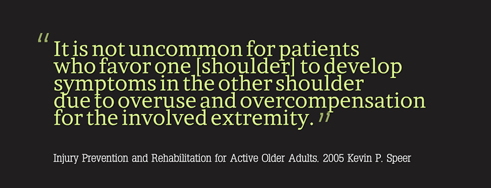 Muscle imbalances result, placing tension on bone and softer tissues - leading to a misalignment within the lower body. The extra stress on the opposite side of the body will also result in weakness and fatigue of the tissues - increasing the chances they can eventually be injured or gradually degenerate. This is a textbook example of how you get an overcompensation injury. In some cases, physical therapists warn that overcompensation can be very dangerous as it will eventually affect gait or alignment on a permanent basis. An injury to one achilles can easily lead to straining in other areas, making an overall recovery hard to initiate. The longer the injury (and corresponding pain) persists, the greater the chance that you will sustain more strain from overcompensation, eventually leading to issues in those areas as well. To minimize potential secondary injuries, know that it is important to deal with your achilles heel tendon injury quickly and completely. Truly, chronic achilles/calcaneal tendon injuries can become a vicious cycle - which is why it is absolutely critical to focus on methods that improve and strengthen injured tissue in a timely manner. The faster you truly heal, the less chance you have of sinking into a downward spiral of re-injury, scar tissue growth and overcompensation injuries. Okay, So I Have an Achilles Injury...What Should I Do Now?Stage 1: If the injury is very recent - use a good quality cold pack and Arnica Pain Relief Cream. If the injury has been going on for awhile, then skip to Stage 2 below.An injured Achilles tendon will receive very little blood flow; this occurs because swelling and inflammatory symptoms restrict that blood flow. Couple that with the fact that your Achilles tendon receives very little blood flow to begin with, and you can start to see why this can be a major problem. In most tendonosis cases, however, the tendon is not inflamed - in such cases the use of cold is relatively ineffective as there is little or no swelling to be dealt with. If you are experiencing pain and swelling in the very early stages of the injury (first 48 to 72 hours), the first step in a conservative treatment protocol would be to focus on reducing the discomfort by applying a quality cold pack to the injured achilles along with a high quality pain relief cream such as our Arnica Infusion Cream. A Cold Compress or Ice Pack should also be used during other stages of the healing process. Some examples include...
Having a Cold Compress or Ice Pack available at home to use if and when the need arises is helpful. Many of you already do so. Many people over-focus on cold while ignoring the most critical aspect to healing - nourishing injured tissue with a strong blood flow - the body's healing capability is generally dependent on blood flow.. This leads to the most important recommendation... Stage 2: Focus on Increasing Blood Flow To The Injured Tissue - Blood Flow is What The Body Uses to Heal Soft TissueEven though the concept is simple, improving blood flow to injured tissues can be difficult. When the injury is achilles related, the challenges are even greater. Traditional methods require your muscles and tendons to move to promote blood flow (exercise), but that same motion that promotes blood flow can at times lead to making your pain and condition worse.
Most people we deal with tell us these scenarios have happened to them many times in the past. Perhaps it has already happened to you. Promoting blood flow within a muscle or soft tissue injury to help the body heal itself is a concept that has been utilized for centuries. This is where the focus has to be if you are seeking long-term improvement. Oxygen and nutrients, carried within the blood, are critical for the body to heal itself. Without proper blood flow, recovering from an injury or condition will be delayed...sometimes for a very long period of time. The real challenge is how do you promote blood flow to the achilles injury site without causing further injury? This goal is further complicated by the fact the achilles (and muscles controlling the ankle joint) are involved every physical movement we perform each day if we are on our feet. An injury that often leads to straining in other areas will make an overall recovery hard to initiate. People tend to "chase the pain", meaning they only focus on treating an area that is actively painful, while not taking into account the fact they other areas of the body will be overcompensating...eventually leading to issues in those areas as well. 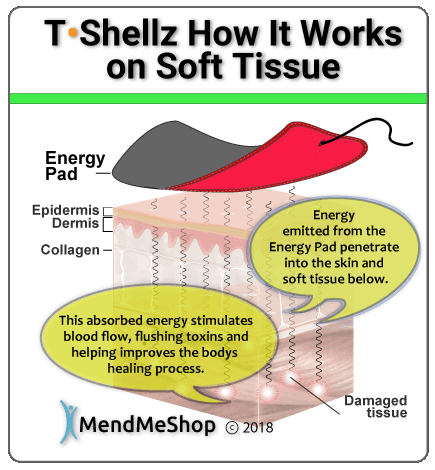 Heat energy generated by the TShellz Wraps® operate by increasing blood flow in our injured soft tissue. This means ligaments, muscles, and tendons. The objective of the TShellz Wrap® is to increase blood flow in these targeted areas, resulting in relaxation of the vessel walls. The vessels then gently expand, allowing for more nutrient rich blood to reach the damaged tissues. Plus, the enhanced blood flow helps in flushing waste and fluid build-up from the injury site - further enhancing the ability of the body to heal. More blood now begins to flow effectively to tissue within the treatment area - for the length of the treatment and a short duration thereafter. Soft tissue needs substantial blood flow to heal as it is through the blood the body carries the oxygen and nutrients needed for proper and long-term healing. Now, on to recommendation number two in the journey to heal your injured achilles... The Achilles TShellz Wrap® - A Healthy Achilles For The Long TermThe best option we came across in our research to accomplish effective blood flow to soft tissue in the achilles area at home is the Achilles TShellz Wrap®. Use of this device results in an increase of blood flow within the treatment area - all in a non-invasive manner. Have you seen what happens when you add water to a flower wilted from drought? In essence, your injured achilles is much like a "wilted" flower; your body wants to heal its injury, but needs lots of nutrients to do it. Blood brings life to your tissue by delivering healing nutrients and oxygen that are vital for their growth and survival. In addition, the blood carries away toxins and waste cleaning the area and healing it faster. Without a good supply of blood, your achilles simply won't heal properly. Using a TShellz Wrap® will not expose you to the risk of causing further harm to soft tissue like you can when using rigorous exercise. The Achilles TShellz Wrap® accomplishes the goal of enhanced blood flow without the need for intensive exercise and as such reduces your risk of re-injury. TShellz Wrap® = Accelerated Blood Flow for Your AchillesThe intention of an Achilles TShellz Wrap® is to ease pain by dilating blood vessels, decrease stiffness by elongating soft tissue, improve blood circulation, and boost metabolism and enzyme activity. In stimulating localized blood flow to damaged soft tissue, you provide needed oxygen and nutrients to grow strong healthy collagen. In addition, you will experience a clearing of toxins and excess fluid build up from the injury site. Over the intermediate term, this helps to reduce incidents of swelling as trapped fluids will be whisked away - reducing pressure on blood vessels. Using the TShellz Wrap® is truly a unique experience. Within moments of applying a treatment to your achilles, you can feel the healing sensation due to the increase in blood flow within the area. During a treatment, and for quite some time after you finish, the treated area will feel relaxed and warm. It's a very soothing sensation and extremely effective. Blood flow in this area is key, as the Achilles tendon receives very little blood flow to begin with. Who Should Use the Achilles TShellz Wrap®We recommend the use of an Achilles TShellz Wrap®:
Increased Blood Circulation = Increased Healing Rate Low Blood Flow = Weak Healing Rate TShellz Wraps® contain a unique, flexible Carbon Fiber Energy Pad which is flexible and will shape to conform to your body. This Energy Pad emits a uniform wave of perfectly safe energy over its entire surface. This energy is absorbed by soft tissue in your achilles and lower leg, opening blood vessels, resulting in an increase in blood flow. Increased blood circulation is what your body needs to accelerate the healing of soft tissue and this is why we recommend the Achilles TShellz Wrap® for the achilles heel area. The Achilles TShellz Wrap®, is an FDA Registered Medical Device and is suitable for use at home. It is completely safe for people and patients to use for themselves. The technology found in a TShellz Wrap® has been in use for decades in the worlds of professional and amateur sports - a contributing factor as to why athletes seem to recover from injuries so quickly. Have you ever wondered by an athlete can return to activity after 3 or 4 weeks following a knee injury - while your average person takes much longer to return back to normal? The secret isn't really that much of a secret - it involves consistent conservative treatment therapies such as the TShellz Wrap® to help stimulate blood flow to injured soft tissue. Most athletes have the luxury of using in-house facilities many times per day. How many us can afford the time and money to visit a clinic multiple times a day? Very few indeed. This is how you can gain the same advantage that athletes enjoy via quick recovery from soft tissue injuries - by using a device like the Achilles TShellz Wrap® two or three times a day on a consistent basis. Consistent Treatments = Consistent And Long Term Improvement What Else Makes the Achilles TShellz Wrap® So Special?We believe the TShellz Wrap® to be an effective treatment to stimulate blood flow to soft tissue such as muscles, tendons, ligaments, and other similar tissues. We can promise that you will receive a product that is designed to be safe and does what it is supposed to do...quickly relieve pain and aid in the recovery from tendon, muscle and other soft tissue injuries via an increase in blood flow. The unit plugs into a standard wall outlet to get its power. The nice thing about the power supply is that the same unit can be used in North America and overseas as well. It has the capability to operate between 110v and 230v. It has a special signal controller that can be set for 3 different power levels of application (3=High, 2=Medium, 1=Low). The cord is long so you can sit or lie comfortably and watch TV, read or surf the net while you're using it. Treatments are max 30 minutes in duration and the device can be worn over clothing. This allows you to use the device at work, at home, or really anywhere you have access to an electrical outlet. A Recap of the Benefits of the Achilles TShellz Wrap®..
When Should I Use My TShellz Wrap During the Day?The most common question we receive from individuals prior to purchasing is - how many times a day should I be using my TShellz Wraps® and when should I be using them? While treatment plans will differ for each individual and their specific injury, there are general guidelines that should be adhered to.
The Achilles TShellz Wrap® would then be used:
Stage 3 - In Between Treatments With TShellz Wrap®, Apply Our New Fast Acting Pain Relief Cream Called ARNICA INFUSIONDealing with aches and pains affecting the foot, ankle, leg, knee, hamstring, hip, back, arm, shoulder, elbow, wrist, or hand? If so, then applying the Arnica Infusion to any of these targeted areas will bring about fast relief from the pain and sore tissues. Simply apply a small amount of cream to the body and moments later, you will experience a soothing and comforting sensation over the area. Arnica Infusion is specially designed to relieve pain due to sore muscles and joints associated with arthritis, backaches, sprains, strains, and bruises. No matter if you are dealing with an acute injury, chronic pain, or a general "flare-up" - you will experience fast relief from pain and inflammation. This is a product that many of our current MendMeShop customers asked us to develop. So we focused our time and resources over the past few years and came up with what we believe will be one of more effective, fast acting, topical pain relief creams on the market. You are likely familiar with some of the standard topical agents on the market as most of our customers use them. The are mass marketed and even found in most department stores now. Well, we are here to say that Arnica Infusion goes many steps beyond what they offer. Made in the USA at an FDA registered manufacturing facility, you can be assured that Arnica Infusion is both safe and effective. We only source top grade ingredients while implementing strict quality control checks during every step of the production process. Expect the same high quality that MendMeShop customers have been accustomed to since we started the company in 2005. The "Cool Blue" formula is the perfect balance between the smooth application of a cream and the effective absorbing factor of a gel. It is not too thick and not too thin - just the right texture. Best of all, it feels very nice on the skin! Each application of Arnica Infusion feels so comforting and soothing, we are certain it will become an item you will not want to live without. Arnica Infusion IngredientsThe Arnica Infusion formula is based on a combination of scientific research and the use of high quality ingredients. The properties within the formula were chosen for their pain relief, anti-inflammatory, and soothing qualities. The acting ingredients within the formula include ones many of us are familiar with; along with ones that have not received a lot of publicity (only in research circles). Extensive testing resulted in a blending of ingredients that provides the most synergistic of benefits. The notable ingredients in the Arnica Infusion formula include:
Extensive quality control procedures during the manufacturing process ensure the ingredients and final product are both safe and effective. We would not stake our reputation on anything but the best. When Do I Apply the Arnica Infusion?While At WorkApply Arnica Infusion at work to help reduce acute discomfort associated with overuse of muscles and joints. No matter if you are in a physical demanding job or work within an office environment, you will be placing stress on different parts of the body and aches and pains will result. Before Or After Work, Sports, & ActivityIf you suffer from a sprained ligament, pulled muscle, strained tendon, or even bruising - apply Arnica Infusion for quick relief of the pain. Chronic Pain SufferingApplication of Arnica Infusion can be done up to a maximum of 4 times per day on a consistent basis to help bring about relief from various pains and aches. In-between Treatments With the TShellz Wraps®Follow up your T-Shellz and Cold treatments with an application of Arnica Infusion. Combine the pain relieving benefits of Arnica Infusion along with the healing benefits of the wraps to make your recovery go much more smoothly. Do not apply Arnica Infusion within a 2 hour timespan before a TShellz Wrap® treatment. Whether you decide to use the Arnica Infusion in conjunction with the T-Shell and other treatments - or if you decide to use the cream as a stand-alone product - you will not be disappointed with the results. We guarantee it. A Note On OverCompensationSince you are reading this, you probably know that serious achilles and lower leg injuries do not just disappear. Over time, it will wreak havoc on your knees, ankles and lower back due to lack of movement, over-compensation and a change in gait. It will also wreak havoc on your opposite achilles side, due to overcompensation. Recovery takes a longer time for such chronic (long term) injuries, but proper healing is essential to regain strength and get you back to the activities you enjoy. Everything in the human body is connected. An Achilles tendon injury can lead to other injuries over time if not treated properly. For example, the foot of your injured leg may start hurting. On-going pain in this area could potentially result in plantar fasciitis. You may also over-strain your Achilles tendon, knee and/or hip in your opposite, healthy leg because you will automatically put more weight on your non-injured side to cope with everyday activities. When you experience pain on the opposite side of your body, this is something called "over compensation" pain. Over time you may also change the way that you walk when your Achilles tendon is hurting. If you change the way that you walk, how you get in and out of a car or even the way you climb a flight of stairs you may irritate your lower back. Usually an Achilles tendon injury will happen to your domininant leg (if you are right handed, this would be your right leg). When this happens there is a higher risk that you will over-strain your weaker leg that is compensating for your injury. On-going injury, chronic conditions and over compensation pain are all reasons why it is important that you remain proactive in your recovery. This is why it's also critical to completely heal your Achilles tendon before returning to activity. If you don't focus on healing your injury quickly and completely you run the risk of interrupting your lifestyle in a major way. The longer your injury endures, the greater the risk of running into serious overcompensation injuries and a permanent change in gait. To Stop Re-Injury & Reduce the Risk of a More Serious Overcompensation Injury, You Need to Heal Quickly & Completely!Anyone in need of rapid recovery and complete healing must consider a comprehensive treatment plan that includes an effective means to minimize swelling and inflammation yet also stimulate healing and tissue elasticity. We have found no better set of tools that can be used at home than this: Conservative Treatment Tools Our Clients Have Used to Help |

Achilles Tendon Facts There are over 250,000 achilles tendon injuries each year in the US. Achilles tendon ruptures are common in people between the ages of 30 and 50. In runners, too rapid an increase in mileage, hill training without proper strengthening, and recent or inadequate changes to running gear can cause injuries to the Achilles tendon. Achilles tendonitis accounts for an estimated 11% of running injuries. 3-5% of athletes are forced to leave their sports career due to Achilles tendon overuse injuries that go untreated. Medications mask the pain but do very little in the healing of Achilles tendonitis. A fully ruptured tendon REQUIRES surgery. It will not heal on its own. Achilles tendonitis and Achilles tendinitis are the same thing. Continually using your Achilles tendon while it is injured will lead to a more serious and/or chronic injury.  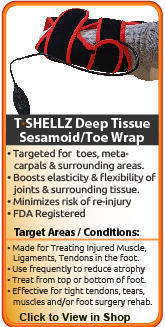        |
